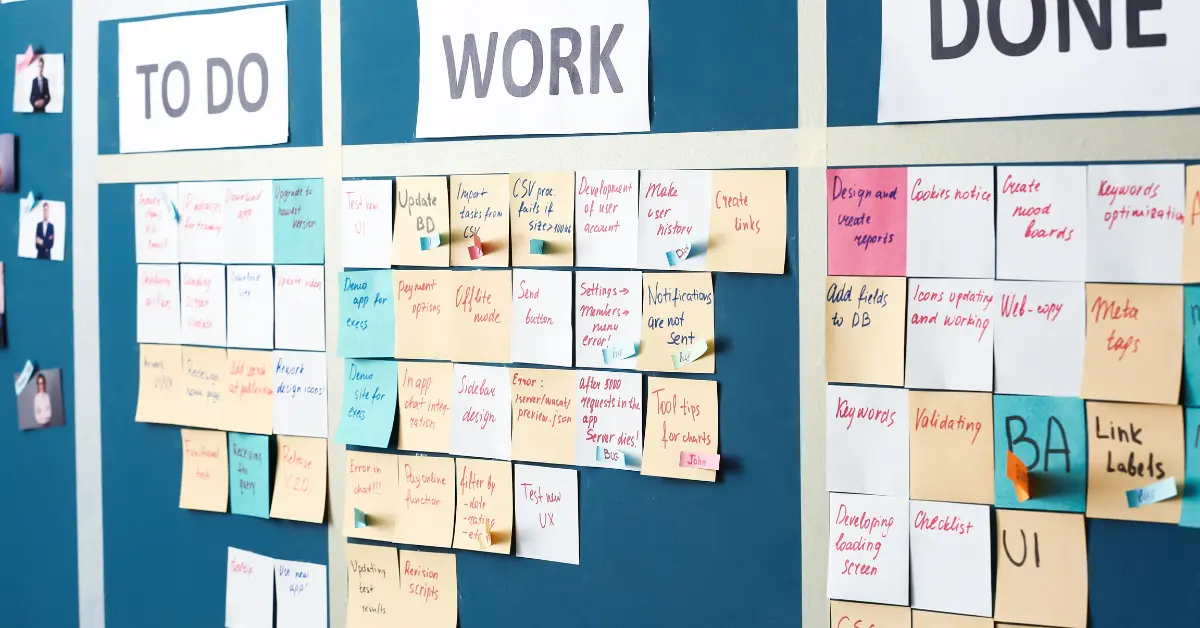Projects are temporary endeavors initiated to create value, and schedule is one of the main constraints of a project along with scope and cost. A key component of project scheduling and time management is the schedule baseline.
This post will provide an overview of a schedule baseline, its purpose, how to create one, and its benefits, and provide tips for studying this topic for the PMP certification exam.
By the end, you’ll have a comprehensive understanding of schedule baselines and how they are used in project management to plan and track project schedules.
Whether you’re new to project management or an experienced project manager, this article will give you a more solid footing in this fundamental concept.
What is a Schedule Baseline?
The PMBOK Guide 6th Edition defines the schedule baseline as the approved version of a schedule model that can be changed only through formal change control procedures and is used as a basis for comparison to actual results.
It is a key document in project management that is accepted and approved by the appropriate stakeholders as the schedule baseline with baseline start dates and baseline finish dates before work begins.
The project schedule baseline displays the project timeline, milestones, dependencies, and resource requirements needed to complete project tasks.
As work is completed, you can compare the actual schedule against the baseline schedule in the form of a Gantt chart to calculate schedule variance and determine if the project is on track.
If delays occur, you can use the baseline to analyze causes and adjust the current project schedule to get back on track.
This baseline, along with scope and cost baselines, forms the Performance Measurement Baseline (PMB), crucial for effective project management.

Schedule Baseline Purpose
The schedule baseline is a critical project management tool for measuring performance and keeping projects on track.
It captures the original project timeline and provides a benchmark to assess progress and identify needed schedule changes.
Its purposes include:
Official Documentation of the Approved Schedule
The schedule baseline serves as the official project documentation for the timeline agreed upon by key stakeholders at the start.
It records important details like milestones, task dependencies, resource assignments, and deliverable dates.
Having this documented baseline improves communication by aligning all parties on the expected deadlines and schedule.
Performance Measurement
Comparing the actual project schedule against the baseline schedule allows you to calculate metrics like schedule variance and determine if the project is falling behind.
You can also use the baseline for earned value management analysis to identify issues early and take corrective actions to get back on track.
Basis for Resource and Cost Planning
The project schedule baseline provides key information needed for more accurate resource planning and cost estimates.
By linking tasks and resources, you can better plan budgets and optimize staffing.
Ongoing Project Control
Throughout the project life cycle, the schedule baseline enables better control. You can forecast timeline performance, model different scenarios, and assess the impact of risks allowing proactive schedule management.
Change Management
The schedule baseline provides a point of comparison to determine if proposed schedule changes are necessary and justified.
By evaluating change requests against the baseline, you can analyze the impact and decide whether to approve changes.
Vendor Management
For projects involving external vendors, the schedule baseline allows you to hold vendors accountable for deliverables and milestones.
You can then invoke penalties or take other actions if vendors fail to meet baselined dates.
Stakeholder Expectation Management
By documenting the approved schedule upfront, you can manage stakeholder expectations around timelines and deliverables using the baseline to keep them aligned on the plan.
Components of a Schedule Baseline
A schedule baseline is made up of several core components that capture the as-planned project timeline.
Key elements to include in a robust schedule baseline are:
Project Activities
Break down the project scope and objectives into discrete activities and tasks that must be completed to deliver the project and document them.
Milestones
Identify major milestones that mark key achievements, phase transitions, deliverables, and gates throughout the project lifecycle.
Dependencies
Outline the predecessor and successor relationships between activities. Note the logical order and interdependencies of work so it is sequenced appropriately.
Durations
Estimate realistic activity durations including best case, most likely, and worst case timeframes. Account for resource constraints.
Resources
Specify what resources (people, equipment, materials) are required to perform each activity.
Dates
Capture planned start and finish dates for every activity based on durations, dependencies, and resource availability.
Risks
Note key schedule risks that could impact baseline dates like resource bottlenecks, late approvals, or external issues.

How to Make a Schedule Baseline
Creating a detailed schedule baseline takes effort upfront but provides the foundation for effectively managing your project timeline and executing projects on time.
Follow these best practices to create a schedule baseline for project success.
1. Determine Project Scope and Objectives
First, clearly define the project scope and objectives that must be achieved. Understand what the deliverables are and their acceptance criteria. This provides the framework for building out the detailed activities.
2. Break Down the Project Work
Break down the scope into manageable chunks using a work breakdown structure (WBS). The WBS will create a hierarchy of tasks that need to be completed to deliver the project. Break down work packages into discrete activities and milestones.
3. Estimate Activity Durations
Once you have your activities defined, estimate how long each one will take to complete. Use techniques like analogous estimating or 3-point estimates to determine accurate durations. Build in buffers for uncertainties.
4. Sequence Activities
Determine the logical order and dependencies between activities using a network diagram.
Outline what activities must precede others and if there are any lag times. This will form the basic flow of your project schedule.
5. Assign Resources
Link the required resources, whether staff, equipment, or materials, to each activity. Estimate resource usage needed to complete the work as this can impact activity durations.
6. Develop Timeline
Lay out all activities, durations, and dependencies on a Gantt chart to visualize the overall project timeline. Ensure the sequencing is logical and aligned with resource availability. The Gantt chart becomes your master schedule.
7. Gain Approval
Review the completed schedule baseline with stakeholders and sponsors. Address any concerns and make adjustments until you get a formal sign-off on the baseline. This buy-in is essential.
8. Finalize Baseline
With approval attained, finalize the schedule as your official baseline. This will be used moving forward to measure performance and track project progress.

Benefits of a Schedule Baseline
Establishing a schedule baseline provides numerous benefits for managing your project timeline and performance.
Here are the key advantages of creating a detailed schedule baseline:
Objective Performance Measurement
Having an approved baseline of your initial project schedule gives you an objective point of comparison.
You can accurately track schedule variance and earned value metrics compared to the baseline to identify slippage or delays.
Increased Visibility
The baseline provides clear project documentation of the key dates, milestones, and timelines that stakeholders aligned on enabling greater transparency and accountability over the agreed-upon schedule.
More Accurate Forecasting
With a baseline, you can more precisely forecast upcoming deliverables, resource needs, and required budget. The baseline data feeds your models for estimating future timeline performance.
Improved Risk Management
Potential schedule risks can be identified by comparing the baseline dates against the actual dates. You can also run a “what-if” scenario analysis on the baseline to quantify and prepare for risks.
Proactive Schedule Management
Schedule discrepancies are revealed early rather than waiting until the end of the project lifecycle. This allows time to proactively apply corrective actions and keep the project on track.
Enables Change Control
The baseline provides a reference point for determining if proposed schedule changes are justified and necessary vs scope creep. Only changes delivering clear value should be approved.
Stakeholder Alignment
Communication with stakeholders is enhanced by having a common baseline schedule and set of milestones that everyone is working towards.

Schedule Baseline Example
Let’s walk through an example schedule baseline for an IT system implementation project to understand how it captures the key elements of the initial project timeline.
Project Overview
The project will implement a new cloud-based CRM system for a company over a 6 month timeline.
Major Milestones
- Kick-off: February 1
- Requirements Gathering Complete: February 28
- System Configured: March 31
- Testing Complete: May 30
- Training Complete: June 15
- Go-Live: July 1
Key Tasks
- Install networking equipment
- Conduct requirements workshops
- Import data
- Configure system settings
- Develop reports and dashboards
- Conduct user acceptance testing
- Fix defects
- Deliver training
Resource Assignments
- Project manager: John
- Business analyst: Jane
- Developer: Bob
- Trainer: Sue
Task Dependencies
- Requirements complete before configuration starts
- Configuration complete before testing starts
Risks
- Delay in networking equipment delivery
- Requirements scope creep

Schedule Baseline vs Project Schedule
The schedule baseline and project schedule are two important project documents that are easily confused. Here are the key differences:
Definition
The schedule baseline is a static snapshot of your project plan and serves as a fixed reference point throughout the project period.
It is essentially a frozen picture of the project schedule that is used as a benchmark for performance measurement.
In contrast, a project schedule is a live and evolving document that outlines the project activities, their sequence, and the expected start and end dates.
Purpose
The schedule baseline is used as a reference point to measure the performance of the project, and identify and manage any deviations or delays in the project timeline.
On the other hand, the project schedule serves as a roadmap for the project team. It guides the project execution and details what needs to be done, by whom, and when.
Flexibility
The schedule baseline, once established and approved, rarely changes. Any amendments to the schedule baseline require a formal change control process, and it remains fairly constant throughout the project.
Conversely, a project schedule is meant to be flexible. It gets updated and adjusted as the project progresses, accommodating new information and changes in the project scope or timeline.
Role in Project Management
A schedule baseline is primarily used for performance measurement and control. It helps project managers manage stakeholder expectations and control the project timeline.
Conversely, the project schedule is a working tool that the project team and stakeholders use daily.
It is used for planning, coordinating, executing, and tracking the progress of project tasks.
Creation Time
The schedule baseline is typically established once the project plan has been fully developed and approved, providing a snapshot of the project schedule at a specific moment, usually at the project’s beginning.
On the other hand, the project schedule is developed during the planning phase of the project and continues to be refined and updated as the project progresses.
Change Management
For a schedule baseline, changes are not common and, when necessary, require a formal change control process, including reviews and approvals. This ensures that the baseline remains stable and reliable as a reference for project performance.
Conversely, changes in the project schedule are more frequent and expected, reflecting the dynamic nature of project execution.
These changes are generally managed according to the project’s change management plan but do not require the same level of formality as changes to the schedule baseline.

Schedule Baseline PMP Exam Tips
The Schedule Baseline is a key concept outlined in the Project Management Body of Knowledge (PMBOK) Guide.
It’s a part of the Project Management Plan, created during the ‘Develop Schedule’ process.
The Schedule Baseline serves as a reference point for managing project schedule variances throughout the ‘Control Schedule’ process and an updated schedule baseline is an output of this process.
For PMP exam aspirants, understanding its role and how it interacts with other project elements is crucial.
Examine how it’s developed, considering factors like resource availability, schedule constraints, and risk management plans.
Remember, any changes to the Schedule Baseline are typically considered changes to the project scope and require formal change control procedures.
Also, make sure you understand:
- The difference between the baseline and project schedule
- How to create a robust schedule baseline
- The core elements like milestones, durations, dependencies
- The uses and benefits of the baseline for schedule control
- How to measure schedule performance against the baseline
- Techniques like schedule variance analysis and earned value
- The change control process for updating the baseline
- How to update the project schedule without affecting the baseline
- Examples of schedule baselines for different project types
When answering situational questions:
- Recognize changes that require a baseline update vs just the schedule
- Know when to revise a baseline vs manage deviations within margins
- Consider the impact of a baseline change on cost, resources, etc.
- Determine if a baseline needs to be re-approved after changes
- Assess the implications of an outdated baseline vs the current schedule
Understand the purpose, creation, uses, and change management of a schedule baseline.
Review examples in the PMBOK® guide and do practice questions to master this for the exam.
Final Thoughts
A successful project requires working within the schedule baseline. Therefore, planning the project schedule involves determining how to effectively manage and control the project to the schedule baseline, and manage schedule variances.
The schedule baseline is a foundational project management tool that establishes the original scope, timeline, milestones, and deliverables agreed upon for a project.
This baseline schedule serves as the benchmark to measure performance against as work is executed.
By comparing against the baseline, you gain visibility into schedule variance and can take proactive actions to keep projects on track.
Remember to follow change control procedures when revising the baseline.
Schedule Baseline FAQs
When Should a Schedule Baseline be Changed?
A schedule baseline should be changed when significant alterations to the project plan occur, such as changes in scope, resources, or timelines, that impact the original scheduling assumptions.
This process should follow a formal approval procedure to maintain control and transparency.
What is the Difference Between the Scope Baseline and Schedule Baseline?
The scope baseline outlines the project’s goals, deliverables, and work required. The schedule baseline represents the planned timeline for the project.
While the scope baseline focuses on what is to be achieved, the schedule baseline details when and in what sequence the tasks should be performed.
How Many Baselines Can You Save for a Single Project Schedule?
The number of baselines you can save for a single project schedule depends on the project management software used.
For instance, Microsoft Project allows up to 11 baselines (Baseline 0 to Baseline 10) for a single project schedule.
Can a Baseline Schedule have More than One Critical Path?
Yes, a baseline schedule can have more than one critical path. This situation occurs when multiple sequences of tasks, any delay in which could extend the project’s end date, exist in the project. These sequences are termed parallel critical paths.
What Makes up the Schedule Baseline?
A schedule baseline comprises the approved version of the project schedule, including planned start and end dates for tasks, task dependencies, resource assignments, and the sequencing of project activities.





